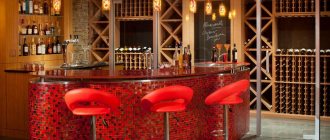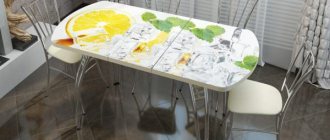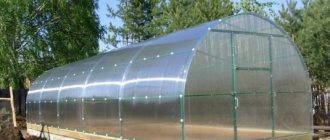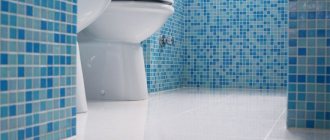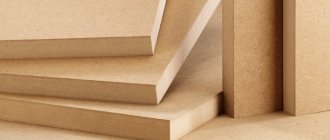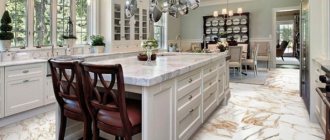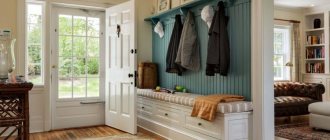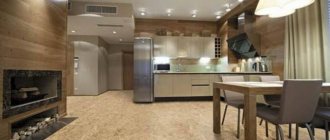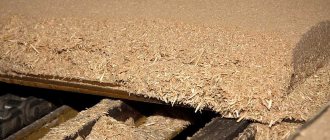What is polycarbonate
There are two types of polycarbonate - cellular and monolithic. For roofing work, as well as for the construction of auxiliary buildings on the site, including gazebos and greenhouses, the cellular version is mainly used. This is a transparent, flexible sheet material consisting of three layers:
- Upper layer . It is a sheet of polycarbonate, which is covered on top with a protective film that does not allow sunlight to destroy the material.
- The middle layer is a cellular layer. Hollow cells with polycarbonate walls give the material high thermal insulation characteristics and also make it lightweight. The walls of the cells act as a kind of stiffening ribs, due to which the material is characterized by quite high strength.
- The bottom layer is another solid sheet of polycarbonate, but without a protective coating.
Transparent polycarbonate for greenhouse Source eddi.ru
External covering
Good coverage for the construction of greenhouses with steep roof slopes . The disadvantages include a small snow load, as well as the need for a strong foundation, otherwise the structure will move and the glass will crack.
This coating option is more suitable for a winter greenhouse, provided that a single-chamber double-glazed window is used.
A relatively good option, especially if the film is special with a high ability to transmit ultraviolet radiation. Another advantage is ease of installation and delivery .
The main disadvantages are the fragility and the need to remove the film in the winter.
Polycarbonate
Ideal for covering . Polycarbonate is able to take the required shape and withstand significant loads, subject to certain rules for choosing and caring for a greenhouse.
If you are going to grow a large assortment of plants, then the best option is to buy transparent polycarbonate. But what kind of polycarbonate is used for greenhouses?
You should pay attention to the thickness of the sheet. If it is less than 4 millimeters, then it is not worth purchasing. Although it is possible, provided that the frame is covered with two layers of polycarbonate.
Quite good performance is achieved by sheets 6 millimeters thick, which have an additional inner layer that will prevent condensation from accumulating inside the polycarbonate greenhouse. The best, in the opinion of experts and in terms of do-it-yourself repairs, are polycarbonate greenhouses.
Please note the presence of a coating that protects polycarbonate from destruction under the influence of UV radiation . And also do not forget about the polycarbonate foundation for the greenhouse.
The layer that protects against ultraviolet radiation must face upward during installation. Installation on the contrary will lead to a reduction in the service life of polycarbonate instead of the stated 10 (actually about 15) to 3, maximum 4 years.
Sheets marked “for indoor use” are also not suitable for use. They have no protection from the sun's rays. For protection, the most commonly used method is varnishing.
You should not purchase polycarbonate sheets that are marked “Economy”. This is an indication of the presence of recycled polymer, which reduces the strength of polycarbonate sheets .
The video below will help you choose the right polycarbonate greenhouse.
So, you have decided what the arches of the greenhouse frame will be made of, and you have also decided on the thickness of the polycarbonate slabs for the floor. Consider purchasing specialized fittings. This includes elements that securely hold the polycarbonate in place , excluding ruptures of the polymer and water entering through them.
Read also: Review of the egg incubator “Universal 45”
With repeated exposure to moisture and sun, the tape will peel off and microorganisms will enter the open channel. As a result, light transmission will decrease, and your greenhouse will shine with a “swamp green” color. Treatment is carried out with steam-permeable sealing tape.
Advantages of polycarbonate greenhouses
Not so long ago, only glass and polyethylene were used to build greenhouses. In the first case, the resulting structures were heavy and fragile, which were also quite difficult to install. But the use of polyethylene film usually did not justify itself, since this material wears out quickly and also collects dirt and dust. Therefore, when the opportunity arose to make greenhouses from practical and convenient polycarbonate, many homeowners gladly took advantage of this opportunity.
The advantages of greenhouses made from new improved material are:
- strength , allowing the structure to withstand the weight of a sufficiently thick layer of snow;
- good light transmission , since all layers of the material are completely transparent and nothing prevents the sun's rays from penetrating inside;
- low thermal conductivity , thanks to which the plants in the greenhouse are protected from cold and sudden temperature changes;
- durability , which allows you to use the structure for at least 5 years without restoring or repairing it;
- light weight , allowing the use of less expensive materials for the frame and foundation as in the case of a glass greenhouse.
Polycarbonate greenhouse from the inside Source mega27.ru
See also: Catalog of companies that specialize in turnkey installation services for greenhouses and similar structures.
The most popular options for do-it-yourself mini greenhouses for a summer residence
Repair of polycarbonate greenhouses
There are several design options for mini greenhouses, which are most often preferred. Let’s briefly look at the features of each of them, try to determine how they differ and which option is better to give preference to:
- Home mini greenhouse. This design is small in size and can even be installed on a windowsill. A mini greenhouse is suitable for year-round use and, despite its modest size, can become a source of fresh greens for the whole year. This greenhouse looks like a smaller street one.
- An arched outdoor greenhouse is a tunnel. To cover it, film or polycarbonate is used. And the installation procedure is quite simple.
- A portable greenhouse is a mobile structure, essentially a sealed lid that covers the plants. This is an excellent solution for small areas, as it allows you to cover plants in the open ground during the cold season.
- An in-depth greenhouse involves partially burying the structure, which allows you to better maintain the desired temperature inside. In addition, this technology allows you to provide additional heating to the plants and maintain a positive temperature, even if it is severely frosty outside.
- A barrel is a mini greenhouse that has two opening doors. In its structure it is a bit like a butterfly. This is a very convenient option that makes it easy to care for all the plants planted inside.
- A snail or bread box is an easy-to-install and convenient-to-use option. The design got its name because of its similarity to a regular bread box, opening according to the same principle.
Scheme of a mini greenhouse made of sheet polycarbonate (1 - base of the greenhouse; 2 - back and front walls; 3 - roof slopes; 4 - top of the roof)
Of course, to avoid hassle, you can purchase a ready-made greenhouse from one of the popular manufacturers, but many choose home-made designs, preferring to make a greenhouse that is ideal in size and characteristics. In addition, thanks to the availability of drawings, a do-it-yourself greenhouse is more than a feasible task for everyone.
Read on Dacha with your own hands:
- Do-it-yourself greenhouse: photos, projects, materials, video instructions
- Greenhouse from a profile pipe: photo, video, instructions
- Greenhouse made of polypropylene pipes: photo, video, instructions
Which polycarbonate to choose
The main characteristics for a greenhouse are good light transmission, reliable heat retention and strength. To obtain a structure with optimal performance, polycarbonate sheets with a thickness of 4 to 10 mm should be used.
The thinner the material, the more expensive and heavier it is. Some conscientious manufacturers use polycarbonate of different thicknesses to create one design. Thus, arched elements are subject to more severe loads during strong winds and precipitation, so they are made of thicker material. Straight and side walls can be constructed from thinner polycarbonate.
Polycarbonate sheets are available in a standard width of 210 cm. Sheets can be 6 or 12 meters long. These parameters are taken into account when drawing up a drawing of the future greenhouse.
Drawing of an arched polycarbonate greenhouse Source stroymoda-nk.ru
It is worth noting that the quality of the finished greenhouse directly depends on the characteristics of the polycarbonate. At the same time, there is a large amount of counterfeit material on the market today that does not have the declared properties. This means that you should purchase finished construction or material for it only from reliable suppliers with extensive experience and an impeccable reputation.
Installation
Foundation for a polycarbonate greenhouse
Installation of an arch-type polycarbonate greenhouse is divided into three stages.
Base structure
We accept a strip-type base made of reinforced concrete. Work in progress:
- marking the area, leveling if necessary. Determination of base points of the foundation;
- digging a trench under the foundation. The depth is calculated taking into account the required height of the foundation (400 mm) and a shock-absorbing “cushion” of crushed stone, gravel or sand (50...100 mm), which is 500 mm. Width – 250…300 mm;
- tamping the “pillow” for pouring. The filling of bulk material is controlled by thickness, tamping is mandatory - this will help avoid “leakage” of liquid concrete and increase the strength of the base;
- installation of formwork. Boards or special plywood are chosen as removable formwork. The height of the formwork depends on the design of the greenhouse - if there are high beds, a rise of 100...150 mm above the ground surface is sufficient;
- fittings are arranged. For further installation of trusses, sections are released above the surface of the future foundation or glasses are installed under the racks with a given pitch. Lightweight structures are mounted on a concrete base in situ;
- Liquid concrete is being poured. To create a foundation, you can take the mixture proportions 1: 3: 5 (cement: sand: crushed stone), adding half the volume of the dry mixture with water;
- after the concrete base has hardened (12...16 days), the foundation is waterproofed with roofing felt and/or additional masonry made of brick or aerated concrete (foam concrete, timber) to increase the height of the greenhouse.
Frame installation
A pipe made from a metal profile can be welded in advance, creating ready-made trusses, or installed on site. The first option is more convenient, especially when using templates - the correct uniform shape of the trusses will facilitate their connection with longitudinal connections and reduce the work time. Truss welding can be done while the foundation is curing.
When assembling the frame by welding, a point connection is used; it is permissible to strengthen the connections with gussets and corners. Places for fastening polycarbonate sheets are drilled in place, taking into account the permissible fastening pitch and ease of installation. Demonstration of how to make a greenhouse with your own hands from polycarbonate based on a metal profile and a prepared base in the video.
Fastening cellular polycarbonate panels
When installing panels, it is important to take into account the property of polycarbonate to expand under the influence of heat. Therefore, the sheets are attached either with an overlap (6...8 cm), or with the installation of special connecting profiles
Fastening cellular polycarbonate panels
The sheets are directly attached to the metal frame elements using self-tapping screws so as not to damage the honeycomb structure of the sheets.
Correct fastening of polycarbonate sheets
If connecting profiles are used, there is no danger of damaging the panels, the seams are sealed and tight, and there is still room for thermal expansion of the material.
An important installation element is the installation of end protection on the panel. This can be self-adhesive tape or an end profile.
Installation via connection profile
Frame
In order for the structure to last as long as possible, you need to choose the right material for the frame that will hold the walls of the greenhouse. The most economical option is a wooden frame. If the wood is treated with a special protective antiseptic before installation, its service life will be at least 10 years.
A frame made of a metal profile will be more reliable, but also more expensive. This is the option used by manufacturing companies. A metal frame will last longer than a wooden one, and it is much more convenient to assemble.
The best arched greenhouses
No. 1 – Volya Dacha Optima
Volya Dacha Optima
This greenhouse, according to most gardeners and experts, is recognized as one of the best on the market. Very durable, excellent for wintering on site and withstanding snow loads of up to 280 kg per square meter of surface, this design will last for many years without complaints. The frame is made of durable steel profile 6x2 cm, which does not rust thanks to the zinc coating. The height of the structure is 2.1 m, the width is 3 m, the length is different, and is presented in three variations for areas of different sizes. There are two doors for entry and a pair of vents for effective ventilation. The greenhouse is quite lightweight and does not require preliminary installation of a foundation. Thanks to detailed instructions and a lot of videos on the Internet, you can assemble it yourself. It is also noted that the cost of the product is very reasonable. The main disadvantage is that sometimes there are problems with the packaging; the manufacturer may forget to include part of the fasteners.
pros
- reliable design
- no foundation needed
- durable
- withstands heavy snow loads
- the frame does not rust
- nice price
Minuses
there are problems with the configuration
No. 2 – Bastion Premium
Bastion Premium
One of the most durable and long lasting greenhouses on the market. The design is made on the basis of double solid arches, providing it with the ability to withstand heavy snow loads of up to 1 ton. Arc welding is performed using the so-called plasma method. The arcs themselves are made of a pipe with a square cross-section and a thickness of 1.5 mm. The metal is protected from corrosion by powder paint and will last up to 25 years. This greenhouse is very easy to assemble - it only has 20 bolts. The kit includes pins that will allow you to secure the structure to the ground. You can assemble the product yourself within a couple of hours - it’s so simple. The main disadvantage is the difficulty of transportation due to large arcs. But the manufacturer gives a 10-year warranty on its product. Dimensions: width 3 m, height 2.1 m, length varies between 4-10 m.
pros
- very strong double frame
- no cracks after assembly
- corrosion protection
- excellent quality fittings
- quick assembly
Minuses
difficulties in transportation
No. 3 – Kremlin Suite
Kremlin Suite
This greenhouse is also loved by many for its strength, reliability and durability. It is very easy to assemble and the finished structure has no gaps through which cold air would penetrate inside. The greenhouse is based on a durable frame made of 2x2 cm profiled pipe; it has no reinforcements, but is very strong. Easy to assemble and disassemble, forming a level truss. The greenhouse can be installed either on a special foundation or on a soil foundation. The permissible snow load is 250 kg per square area.
The greenhouse is equipped with a pair of doors at the end parts, as well as two vents for ventilation. The model can additionally be equipped with automatic pushers for the vents, which will allow you not to worry about the fact that the greenhouse was not opened in time. But you will need to pay extra for this option. The main disadvantage of this greenhouse is its high cost.
pros
- reliable and durable design
- relatively light
- easy to assemble
- high quality frame
- powder coating of the frame
Minuses
Expensive
No. 4 - Will Yota
Will Yota
This greenhouse is the best value for money and is suitable for small areas. It is very durable - the frame is made of a zinc-coated pipe with a cross-section of 2x2 cm. The arcs are located at a distance of just over 1 m from each other. In short, everything is done to ensure that the greenhouse serves for a long time and can withstand significant loads - up to 560 kg per square of roof. The building has two end doors and two vents to provide ventilation. In addition, the manufacturer provides an 8-year warranty on its products.
pros
- very durable
- The optimum ratio of price and quality
- compact dimensions
- no need to clear snow in winter
Minuses
narrow
No. 5 - Uralochka
Uralochka
A polycarbonate greenhouse that receives a lot of positive reviews. It is light, compact, but suitable even for professional gardeners. The metal frame is represented by solid arcs with a cross-section of 3x2 cm, coated with primer-enamel. The model is easy to assemble and easily fixed on the ground. If necessary, you can install a special partition inside and divide the structure into two parts. Disadvantages - the profile of the arcs is too thin (only 1 mm), as well as the inability to withstand a large snow load - in winter the greenhouse must be constantly cleared of snow so that it does not collapse.
pros
- easy to use
- solid frame arches
- easy to assemble
- nice appearance
- light
Minuses
- the frame may rust
- In winter you need to remove snow from the roof
Foundation
It is advisable to install the greenhouse on a foundation, despite the fact that its weight will not exceed 200 kg, and the risk of subsidence on the ground under its own weight is minimal. The fact is that, firstly, in winter, precipitation settling on the walls of the greenhouse will significantly increase its weight. In addition, if it stands without a foundation, then cold air from the street can penetrate through the gap between the soil and the walls. There are known cases when during the summer the air temperature dropped below zero at night. In a greenhouse standing on “bare” soil, all the plants can die in one night.
Another reason to make a simple foundation is that it will provide good protection from the penetration of weeds and harmful insects. And for high-quality fixation of the frame, it is also needed.
Advantages of polycarbonate structures
In order to save money, summer residents willingly purchase such inexpensive material, which has many advantages. When creating the walls of these durable structures with the help of professionals, you can choose a polycarbonate sheet, since it is quite difficult to determine the quality of such a material yourself. Only with vertical glazing can you use hard, colorless plastic with such performance characteristics.
Polycarbonate has a number of generally recognized advantages:
- This material easily bends along the partitions of the cells of arched greenhouses under polycarbonate. Such garden greenhouses have truly unique properties. Cellular polycarbonate has a special structure because tiny cells with long partitions are located inside each sheet of plastic. The density of a solid, colorless material is of considerable importance. Material with thin internal partitions that have a density below 0.8 is not strong enough.
- In terms of light penetration, this transparent hard plastic is not inferior to glass and significantly exceeds it in strength. In such a large polycarbonate greenhouse, sunlight is diffused. The negative impact of ultraviolet radiation on garden and ornamental plants is almost completely neutralized.
- A polycarbonate greenhouse has good thermal insulation. A comfortable temperature regime is maintained inside the structure, as a greenhouse effect occurs. Thanks to the stiffening ribs, this reliable polycarbonate greenhouse is highly impact-resistant and resistant to snow and wind loads.
- Even strong impacts are not harmful to this hard plastic, so this material is completely safe. Polycarbonate sheets can withstand temperatures from -40 °C to +115 °C and are not flammable. Polycarbonate is very easy to clean after any contamination; it washes well. The surface of modern polycarbonate greenhouses will always be clean.
Optimal width and length of the greenhouse
The size of the greenhouse must correspond to the area of the site and its purpose. It should be taken into account that it should not be covered with shadow from other objects, and next to it you need to leave space for open beds. Experienced gardeners recommend the following greenhouse sizes:
- wall height – from 160 cm;
- width – from 235 cm;
- length – from 6 meters (corresponding to the length of the polycarbonate sheet).
It should be taken into account that with a wall height of 160 cm, the ridge will be located much higher. The minimum width is calculated for two beds and a passage between them. If you have the desire and opportunity to have a greenhouse with several beds, you can make it wider. So, each additional bed will take another 1 meter + 35 cm per passage.
The length of the greenhouse can be quite large, but it is advisable to plan it as a multiple of 6 meters - along the length of the sheet of material. The best option is to build an elongated shape into two beds with a walkway. The more plants you plan to grow, the longer the greenhouse and the beds in it should be. However, if it is impossible to allocate a long, elongated section of the yard for the structure, you can build a square or even round greenhouse.
Compact square greenhouse Source mojateplica.ru
Optimal greenhouse shape
Which greenhouse shape is best? If you want to build a greenhouse at your dacha, this is one of the first questions that arises. There are arched, semicircular, rectangular, and pitched greenhouses. The name here speaks for itself. There are, in addition to those listed, design options for greenhouses. But they settle on sites quite rarely.
The best greenhouses, based on ease of installation and functionality, are considered to be arched structures.
- Firstly, it is quite easy to manually attach the covering material to them, be it a film or even soft polycarbonate.
- Secondly, the design of such a greenhouse allows you to grow tall plants even right next to the walls, which cannot be said about semicircular greenhouses.
The rectangular shape of the greenhouse is considered suitable for any use. But the difficulty lies in the construction of the greenhouse. In this case, you need to first make a foundation, since due to the use of heavy materials, the ground under the greenhouse may sag. The same can be said about pitched greenhouses. Please note that you will not be able to build greenhouses of such shapes on your own; in any case, you will have to involve an experienced specialist in the work to do everything correctly.
Read also: Stevia herb: where it grows, what it is useful for, how to use it for medicinal purposes
Greenhouse shape
Polycarbonate greenhouses are manufactured in several standard configurations. They are single-pitch, gable, arched and teardrop-shaped.
Single-pitch
A structure with a pitched roof can be either free-standing or wall-mounted. The wall option is ideal for small areas. The advantages of such a greenhouse:
- good thermal insulation;
- economical consumption of materials;
- ease of installation.
There are also obvious disadvantages:
- the wall of the house does not allow the greenhouse to fully warm up;
- the structure may be damaged by snow or ice falling from the roof of the house.
Polycarbonate lean-to greenhouse Source vi.decorexpro.com
Gable
A design reminiscent of a classic house. Suitable in cases where you need to build a polycarbonate greenhouse whose dimensions are larger than average. Has the following advantages:
- maximum usable area;
- allows you to grow tall plants;
- good light transmission;
- simplicity in the arrangement of the ventilation system.
Minuses:
- increased consumption of materials, which is reflected in the final cost of the structure;
- it is necessary to ensure that sealing is maintained at the junction of the slopes and walls.
Gable greenhouse made of polycarbonate Source sbgreenhouse.com
Arched
The most practical form. There is no joint between the walls and the roof part, and at the same time, the arc-shaped configuration contributes to the rapid and effective removal of sediment.
Advantages:
- an arched building can be of any size, since it is easy to assemble a frame to fit any dimensions;
- high resistance to wind load;
- mobility - it can be easily dismantled and installed in another place;
- low consumption of materials.
Disadvantages:
- not suitable for growing tall crops;
- it is difficult to arrange ventilation.
Arched polycarbonate greenhouse Source stroyportal.ru
teardrop-shaped
Drop-shaped greenhouses have the most aesthetic design. They combine the characteristics of an arched and gable structure.
Advantages:
- increased strength;
- precipitation drains well from the surface of the structure;
- high light transmittance.
Flaws:
- difficulty of assembly;
- high price.
There are also more original forms of such structures. For example, you can build a mini-greenhouse with an opening top in the form of a breadbox or a round domed greenhouse. The choice depends on the requirements for the design. The most practical options are gable and arched shapes.
Drop-shaped greenhouse made of polycarbonate Source ro.decorexpro.com
Gable and lean-to greenhouses
The main difference in the drawings of greenhouses with a traditionally shaped roof is the number of slopes, one or two. Their angle of inclination varies, from 20° to 30° or even up to 45°. Such values ensure the removal of precipitation (in particular snow) from the roof, therefore it is undesirable to use lower values, otherwise in a very snowy winter there is a risk that the top of the greenhouse will break under the weight.
Lean greenhouse
To ensure greater strength of the walls between the vertical elements, the placement of diagonal crossbars or slopes is permissible. In principle, it is advisable to make both the slopes and all other parts of the frame from a steel profile with a cross-section of at least 40x20 millimeters.
Important! It is advisable that diagonal beams and slopes on opposite walls be placed in the same way.
The optimal distance of vertical frame elements between each other is 1-1.2 meters or less. This also applies to rafters, which are placed on the same lines as the vertical elements of the walls. An example can be seen in numerous drawings of polycarbonate greenhouses with a gable or pitched roof.
Gable polycarbonate greenhouse
When calculating the length, width, height of the greenhouse, as well as the distances between frame elements, it is very convenient to proceed from the dimensions of a standard polycarbonate sheet - 6 meters in length and 2.1 in width. Do not forget that it can be divided into two or four parts, and in the same way, when designing, proceed from elements of 3x2.1 or 1.5x2.1 meters. Here you may have a question - why is the sheet not divided by width? The fact is that sawing through a six-meter sheet is labor-intensive and, moreover, using sheets 6x1.05 or 3x1.05 meters is impractical.
Drawing of a gable garden greenhouse with a wooden frame
Scheme of a gable greenhouse (frame made of metal profiles)
Drawing of a gable stationary structure on its own foundation
Drawing for the construction of a polycarbonate greenhouse with a gable roof
Drawing up a plan for a future polycarbonate greenhouse will significantly simplify the process of its construction and protect you from possible mistakes. A greenhouse created according to a competent plan will be durable and effective, bringing an abundant and high-quality harvest every season.
